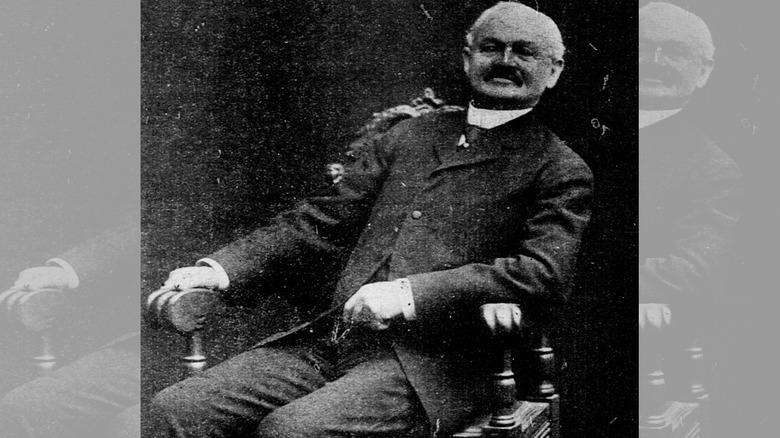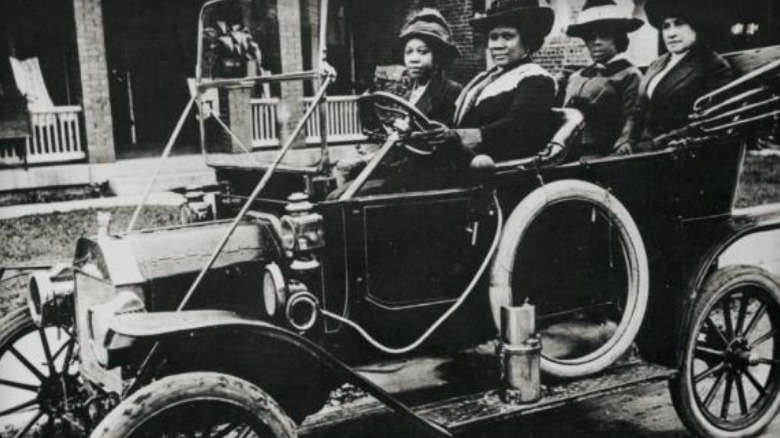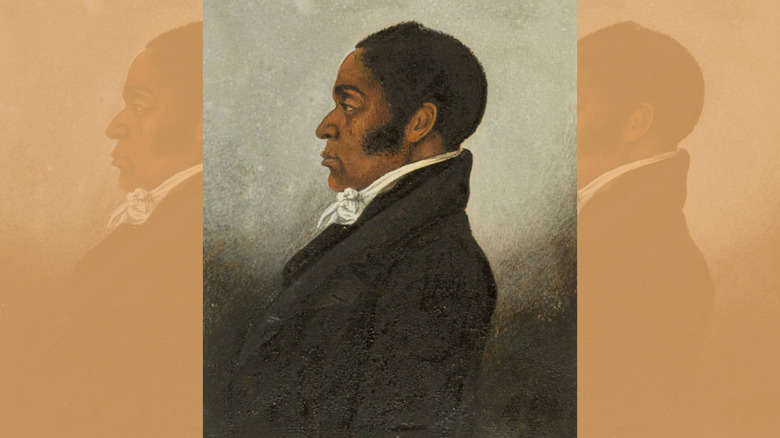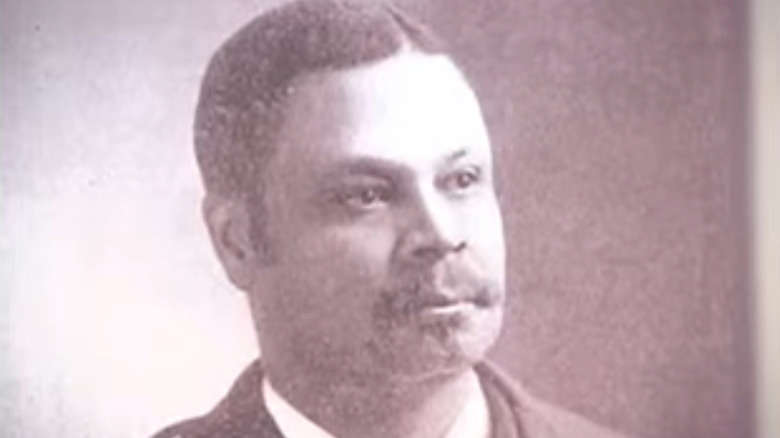Jeff Somers
There’s little doubt that there’s a huge wealth gap in the U.S. along racial lines. As noted by Bloomberg, Black Americans have, on average, one-sixth of the wealth held by their white counterparts. And the racial wealth gap is getting wider every year.
As noted by the Harvard Gazette, this disparity is the result of nearly 160 years of systematic racism in the wake of the end of the Civil War. After General William Tecumseh Sherman’s Special Field Order Number 15 gave freed slaves acreage of their own, there was a moment of hope that the newly-freed Black Americans would be given the resources to build wealth and achieve true equality — but after President Abraham Lincoln’s assassination and the ascent of Andrew Johnson to the presidency, those efforts were reversed — and more than a century of Jim Crow laws and other racist policies essentially made it nearly impossible for most Black Americans to accumulate wealth.
Nearly impossible — but not totally impossible. A remarkable handful of brilliant Black Americans managed to become incredibly wealthy and successful despite these organized efforts to hold them down. Their stories are remarkable considering that Black Americans still face innumerable barriers to gaining wealth even in the modern day. (Of the 2,755 billionaires in the world as of 2022, only 15 are Black — and of the 724 billionaires in America, only nine are Black.) Here are America’s first Black millionaires.

William Alexander Leidesdorff
Portrait of William Alexander Leidesdorff© Wikimedia Commons
As The Washington Post reports, America’s first Black millionaire was William Alexander Leidesdorff — a man Afro News notes is considered one of the founders of what would eventually be known as San Francisco. In 1845, President James Polk named him American Vice Consul to a Mexican outpost in California, making him the first Black American diplomat as well.
Apple iPhone 14 Pro – 128GB – Space Black – AT&T
According to The Daily Beast, Leidesorff was mixed-race and claimed to have been born on St. Croix in the Danish West Indies — though there’s some speculation he might have been born in Hungary. Whatever the truth of his early life, Leidesdorff was incredibly successful. He worked in imports and made a tidy fortune, then moved to San Francisco and became one of its leading citizens, launching a general store, building ships, and running the city’s first hotel. When he died, the city flew its flags at half-mast. His estate was worth about $1.4 million at the time — or close to $60 million today.
One of the most remarkable aspects of Leidesdorff’s life is the fact that he lived openly as a biracial man in Antebellum America, which was not a time known for its racial tolerance. Legally, anyone with Black ethnicity in their background was considered Black, and as therefore subjected to racist policies and laws, even outside of the Southern states.

Mary Ellen Pleasant
Photo of Mary Ellen Pleasant© Wikimedia Commons
The New York Times reports that Mary Ellen Pleasant was born into slavery in 1814. In the 1820s, she moved to Nantucket, Massachusetts — and according to Investopedia, worked to assist the Underground Railroad, which helped those fleeing enslavement find their way to safe areas in the North of the country. She married a man named James Smith, and when he died, she inherited a small fortune.
In 1849, she moved to San Francisco, possibly due to the blowback she received for her work on the Underground Railroad. There she found work as a cook — and eavesdropped on her wealthy employers for investment tips. She soon became the richest woman in the city through a combination of smart loans and businesses, including a chain of boarding houses in a booming city. She was known as “Mammy Pleasant,” and designed and built a fine mansion in the city.
Despite the change of location and her growing fortune, Pleasant remained committed to the abolitionist cause, and secretly donated money — an incredible $30,000, nearly a million dollars in today’s money — to John Brown, whose raid on Harper’s Ferry was intended to spark an uprising and is a key moment in the lead-up to the American Civil War. When Brown was hanged, the authorities found a note in his pocket from Pleasant promising more money — but no one suspected she was the note’s author.

Robert Reed Church
Photo of Robert Reed Church© Wikimedia Commons
According to BlackPast, Robert Reed Church was born in 1839 to steamboat captain Charles B. Church, who was white, and a woman named Emmeline, who was enslaved by Charles. His father never legitimized Robert, but he trained him and hired him as a steward on his boat — the highest position a Black man could hold at the time.
Investopedia reports that Robert Church was forced to serve as a steward on board the steamboat Victona during the Civil War, but was emancipated after the war ended. He moved to Memphis, where he began to invest in real estate, quickly amassing a fortune and a business empire that included hotels and a bar, and co-founded the Solvent Savings Bank and Trust Company.
Church’s fortune rested on his personal resolve and bravery. During the 1866 race riots, Church was shot in his own bar and left for dead. Yet he refused to leave his adopted home. When Yellow Fever swept through the city, property values plummeted — and Church began buying land. By the time of his death, The Washington Post notes that Church was one of the largest landowners in all of Tennessee — possibly the largest. In 1879, Church was so rich that he led the charge in buying municipal bonds when the city of Memphis teetered on the edge of bankruptcy, helping to save the city, and in 1908 he personally paid the debts of the historic Beale Street Baptist Church to prevent its creditors from seizing the property.
Hannah Elias
The© Detroit Publishing Co./Wikimedia Commons
According to Afro News, Hannah Elias was born in Philadelphia in 1865. Twenty years later, author Angus McLaren reports in his book “Sexual Blackmail,” she met the wealthy and highly respectable John R. Platt while working as a “courtesan” in San Francisco. Twelve years later, Platt met Elias again on the East Coast when she was working in a massage parlor — and the two began a relationship.
Platt helped Elias start a boardinghouse business in New York City, but the relationship soon soured, and Platt eventually accused Elias of extorting nearly $700,000 from him, threatening to reveal their sordid relationship to the world. Platt paid the blackmail for years, but in 1904 he’d finally had enough and had Elias charged. When the police arrived at her Central Park West home, she barricaded herself inside. Morbidly, her home then became a stop for early tour buses (pictured) for several days as she held the police at bay.
As noted by Investopedia, Platt’s lawsuit was eventually dismissed. Elias used the money she received from Platt and from her businesses to buy up real estate in Harlem, New York — quickly becoming one of the richest Black women in America at the time. The Atlanta Black Star reports her wealth at $1 million at its height. As noted by the St. Louis Post-Dispatch, Elias is credited with helping to establish Harlem as an iconic Black neighborhood in New York City. She vanished in 1915; although rumored to have traveled to Europe, no one knows her final fate.
Annie Turnbo-Malone

Recipe for hair pressing oil from Poro College© Heritage Images/Getty Images
As noted by Vox, Annie Turnbo-Malone is an often overlooked figure in Black American history, but her achievements as one of the first Black American millionaires deserve more attention.
According to authors Ayana Byrd and Lori Tharps in their book “Hair Story,” Turnbo-Malone was born in 1869 in Metropolis, Illinois, and was orphaned as a young child. Raised by her sister, Turnbo-Malone became interested in chemistry, specifically seeking solutions to the common hair problems Black women face, typically — even today — without much help from mainstream beauty companies. Self-taught in chemistry, she initially created a product called Wonderful Hair Grower and began going door to door in her hometown to sell it. It was an immediate success.
According to the St. Louis Post-Dispatch, Turnbo-Malone later hit upon the idea of using lanolin ointment on damaged hair. She debuted her treatment at the 1904 World’s Fair, and by the end of World War I in 1918, she had a net worth of at least a million dollars, thanks to her Poro label of beauty products. The name “Poro” is a Mende (West African) word for “devotional society.” Turnbo-Malone soon had an international business that empowered other Black women, who could be trained to sell Poro products and even open their own hair salons under the Poro brand. The business was strong enough to withstand the Great Depression and was still going strong in the 1950s when Turnbo-Malone passed away.
Madam C. J. Walker

Photo of Madam C.J. Walker in a car with friends© Wikimedia Commons
Often (incorrectly) called the first Black American millionaire, Madam C.J. Walker was mentored by another Black millionaire — beauty products legend Annie Turnbo-Malone. Born Sarah Breedlove in 1867 to parents who had once been enslaved, Walker was the first person in her family to be born free. History reports that Walker became an orphan at the age of seven, was married at age 14 — and a widow at age 20.
She became interested in hair care after experiencing the trauma of hair loss. According to Vox, the treatments marketed to women suffering her condition were known to actually make things worse — something Walker learned from beauty legend Annie Turnbo-Malone when the two met in the early 1900s as Turnbo-Malone was getting her Poro beauty product empire off the ground. Walker followed Turnbo-Malone’s advice, and soon her hair was healthy and growing again — inspiring her to launch her own beauty and haircare business, modeled very closely on Poro.
As noted by authors Ayana Byrd and Lori Tharps in their book “Hair Story,” Walker introduced the “Walker System” for straightening hair, which became the foundation of the Black beautician industry. By the time of her early death in 1919, at just 51 years of age, she was not only incredibly wealthy, but she had also eclipsed her mentor in terms of fame and cultural impact.
O. W. Gurley
According to Forbes, Ottowa W. Gurley was born in 1868 in Arkansas, where he dreamed of a future far away from the Jim Crow laws of the South. In 1893, when Gurley was 25, that dream took him to the Cherokee Outlet Opening, a land run that gave away acres of land on a first-come, first-serve basis in Oklahoma. According to Inc., Gurley lived there until 1905, when the discovery of oil near Tulsa lured Gurley and his family there.
Investopedia reports that Gurley bought 40 acres of land and built a grocery store. Over the next decade and a half, Gurley was instrumental in developing the area into what would become the Greenwood neighborhood of Tulsa — which was also known as Black Wall Street, an incredible success story for Black Americans during a period of hateful racial oppression elsewhere in the country. The residents of Greenwood were prosperous and lived comfortably, seemingly in community with their white neighbors. Gurley thrived as well, and at its peak, his net worth was about $150,000 — about $5 million in today’s money.
As noted by History, Black Wall Street was destroyed on May 30, 1921, when a race riot of incredibly violent proportions broke out in Tulsa. Black families were murdered, buildings were burned, and within days the whole neighborhood had been wiped off the map. Gurley left Tulsa and moved to Los Angeles, where he died in apparent poverty 14 years later in 1935.
James Forten

Portrait of James Forten© Wikimedia Commons
OZY reports James Forten was born in Philadelphia in 1766 as a free man. He was strongly affected by the rhetoric of the American Revolution; despite the racial oppression that existed at the time, Forten didn’t hesitate to enlist to fight against the British Empire. Having worked in a sail loft since the age of eight, it made sense that Forten served in the nascent American Navy.
According to The Philadelphia Inquirer, Forten was captured by the British while serving on board an American ship. The British captain had his own son on board, and paired Forten with him to act as a companion. When it came time for the ship to return to England, he offered to take Forten with him — but Forten would not betray his country, and refused the offer, winding up living on a prison ship for several months.
As reported by BlackPast, Forten was released in Philadelphia, where he resumed his job. After the war, Forten returned to sailmaking, and eventually took over the business from his employer. Forten grew incredibly wealthy — by 1832, his net worth was estimated at $100,000, which would be close to $3.5 million today. He remained both a patriot and an anti-slavery activist. When he passed away in 1842, his funeral was one of the largest ever seen in Philadelphia — and the crowd was decidedly multi-racial, as every aspect of society came out to pay their respects to a man who never betrayed his values.
John Stanly

Photo of John Stanly© WITN-TV/Youtube
According to author Loren Schweninger in the book “Black Property Owners in the South, 1790-1915,” John Stanly was born into slavery as the son of a merchant named John Wright Stanly and an Ebo woman born in Africa who had been transported to America by Wright. History Collection reports that Stanly was eventually enslaved by Alex and Lydia Carruthers, who allowed him to train as a barber. This, in turn, let Stanly earn enough money to purchase his freedom when he was 21 years old, and to purchase the freedom of his wife and two children a few years later.
Stanly’s business as a barber thrived, and he soon enslaved two Black men himself. He began purchasing property in North Carolina — and enslaving even more Black people. Despite knowing firsthand what it was like to be considered property, at the peak of his business empire, it’s estimated Stanly enslaved 163 people — according to Investopedia, Stanly was one of the richest men in his county at the time. At the same time, NCpedia notes that Stanly also helped many enslaved persons in North Carolina gain their emancipation, personally purchasing and freeing at least a dozen people.
In 1830, Stanly co-signed a loan for his half-brother, who promptly defaulted, forcing Stanly to mortgage all of his holdings — including those he held in bondage. By 1843, he’d sold off most of his property in order to pay his debts.
Jeremiah Hamilton
According to The Atlantic, when Jeremiah Hamilton died in 1875, he was the richest non-white man in America, with a net worth of about $2 million — more than $250 million in today’s money. Yet Hamilton is remembered as no one’s hero. In fact, BlackPast reports that Hamilton was known as “The Prince of Darkness.”
The first mention of Hamilton — which probably wasn’t his real name — comes when a counterfeiting scheme in Haiti fell apart, forcing Hamilton to flee to the United States. He became involved in Wall Street and padded his income by committing serious insurance fraud that involved buying ships, insuring them, and then purposefully sinking them in order to collect settlements. He lost his fortune at least once, but clawed his way back and eventually created what some believe was the prototypical hedge fund, pooling money from investors so he could borrow aggressively and dominate the market.
Hamilton was not well-liked, but in New York, respect for his financial acumen defied racism, and white New Yorkers happily sent him gifts and begged for his favor — in fact, Cornelius Vanderbilt (pictured), another man legendary for his ruthless approach to business, reportedly admitted that he respected Hamilton after the two tangled in court over control over a company.
Sarah Rector

Photo of Sarah Rector© Wikimedia Commons
Sarah Rector is one of the most unlikely millionaires, period, full stop. According to BlackPast, she was born in 1902 on Muscogee Creek land to a family that had been enslaved by the Creek Indians decades before. As reported by The Telegraph, an 1866 treaty granted all the former Creek slaves 160 acres of land, but by the time Rector’s family made their claim, there wasn’t much left, and according to The Washington Post, the land allotted specifically to Sarah was considered virtually worthless.
But the taxes had to be paid, so Sarah Rector’s father leased the land to the Devonian Oil Company — and in 1913, a miracle happened: The company struck oil on Sarah’s land. A lot of oil. In a matter of months, 10-year-old Sarah Rector was receiving roughly $300 a day from her oil lease — close to $9,000 today, or somewhere in the neighborhood of $3 million per year in today’s money.
The reaction of the white establishment was, of course, virulently racist. She was described as “an orphan, crude, Black and uneducated” in a local paper, and was often referred to using racial epithets. Rumors that Sarah was being mistreated by her federally-appointed guardian and her family began to circulate — but the truth was Sarah went to school and had control over her wealth. By the time she was 18, Sarah was officially a millionaire. She lived well until 1967, when she suffered a cerebral hemorrhage and passed away.
Charlie Brown
One of America’s first Black millionaires was also a driving force behind one of its most emotionally powerful holidays: Juneteenth, the day that celebrates the emancipation of slaves in the U.S. According to Forbes, a man named Charlie Brown was born into enslavement in Virginia and moved to Texas around 1865. It’s uncertain when Brown attained his freedom, but it’s known that he helped organize the first Juneteenth celebration in 1866.
As noted by the Houston Chronicle, despite his time in bondage and subsequent illiteracy, Brown was a shrewd businessman. Brown purchased land — including the plantation where he and his wife were once enslaved — and often saw opportunities no one else did. One of his first purchases was a plot of land no one saw much value in, but Brown cleared the land of trees and sold the lumber to a furniture company at a great profit. He quickly became one of the richest men in the country, dying a millionaire in 1920.
What makes Brown’s achievements more remarkable is the fact that Texas was not a friendly place for freedmen at that time. Very few emancipated Black people managed any sort of success, much less attaining incredible wealth, and Brown was himself kidnapped and beaten by members of the Ku Klux Klan (KKK) on several occasions. The fact that Brown died one of the first Black millionaires in the U.S. despite all that hatred and racial violence is incredible.

